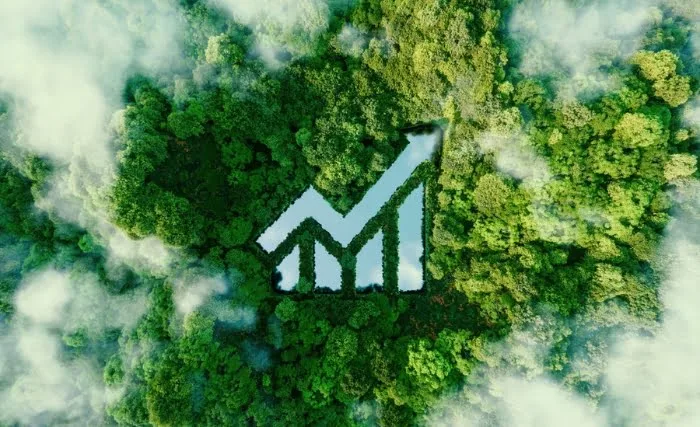
Understanding sustainable growth strategies is, for businesses, a necessity. With increasing pressure from stakeholders, consumers, and regulators, businesses that integrate sustainable growth strategies are thriving in the short term while also securing their long-term success.
In this article, I’ll cover industry best practices, real-world examples, and actionable steps you can take to make your business more sustainable.
Getting to Grips with Sustainable Growth Strategies
Sustainable growth strategies involve incorporating environmental and social considerations into business planning and operations. It’s about creating value not just for today but for the future by balancing profitability with responsibility. This approach ensures that your business can thrive without depleting natural resources or harming the environment.
Why is Sustainable Growth Essential?
Sustainable growth is essential because it aligns business objectives with societal needs. It addresses the growing concern over climate change, resource scarcity, and social inequality. When businesses adopt sustainable growth strategies, they can meet regulatory requirements, improve their brand image, and attract eco-conscious consumers and investors.
The Triple Bottom Line
The concept of the triple bottom line (TBL) is at the heart of sustainable growth. TBL measures a company’s performance based on three criteria:
People: Social responsibility and positive impact on employees, customers, and communities.
Planet: Environmental stewardship and sustainable resource management.
Profit: Economic value and long-term financial viability.

The Benefits of Sustainable Growth Strategies for Businesses
Adopting sustainable growth strategies offers numerous benefits, including cost savings, enhanced brand reputation, and access to new markets. Here’s why integrating sustainability into your business model makes good business sense.
Cost Savings
One of the most immediate benefits of sustainable practices is cost savings. By reducing waste, conserving energy, and optimising resource use, businesses can lower their operating costs. For instance, companies that invest in energy-efficient technologies often see a significant reduction in their utility bills.
Enhanced Brand Reputation
Consumers are increasingly favouring brands that demonstrate a commitment to sustainability. A strong sustainability profile can enhance your brand reputation, differentiate you from competitors, and build customer loyalty. Companies like Patagonia and Tesla are excellent examples of brands that have built their reputation on sustainable principles.
Access to New Markets
Sustainability can open doors to new markets and customer segments. Eco-conscious consumers are willing to pay a premium for sustainable products. Additionally, many governments offer incentives and grants for businesses that adopt green technologies or practices, providing further opportunities for growth.
How to Integrate Sustainable Growth Strategies Into Businesses
Integrating sustainability into your business operations requires a strategic approach.
Sustainable Supply Chain Management
Start by evaluating your supply chain. If you choose suppliers that share your commitment to sustainability and work collaboratively to reduce the environmental impact, then sourcing raw materials sustainably, reducing packaging waste, or improving logistics efficiency might be easier than you think.
Energy Efficiency
Investing in energy-efficient technologies can yield substantial long-term savings. Consider upgrading to LED lighting, optimising HVAC systems, and using renewable energy sources like solar or wind power. Simple steps like regular maintenance and energy audits can also make a significant difference.
Waste Reduction
Implementing waste reduction initiatives can improve efficiency and cut costs. This might include recycling programmes, reusing materials, and reducing single-use plastics. Many businesses also find creative ways to turn waste into valuable products, such as using food waste for composting.
How Does Sustainable Growth Look in the Real World?
IKEA
The Swedish furniture giant has successfully integrated sustainable growth into its business model by focusing on environmental, social, and economic sustainability. They’re a strong example of sustainable growth strategies for businesses and the long-term benefits they can bring.
A key element of this strategy is sustainable sourcing. Since 2020, 98% of their wood came from FSC-certified or recycled sources, and all of their cotton was also sourced sustainably. They’ve also invested heavily in renewable energy, such as solar panels and wind farms.
What is the result?
In short, growth. In 2023, IKEA reported an 11.9% growth in sales, while UK & Ireland CEO Peter Jelkeby said that IKEA grew its market share, too.
HP
In 2022, HP boasted that over 60% of its revenue was attributed to sustainable products. They also vowed to cut absolute value chain emissions by 50% by 2030 and to source 75 % of products and packaging from circular resources by the same year to solidify their approach to sustainable growth.
What is the result?
HP’s dedication even to the pledging of sustainable growth has proven highly beneficial for the company. By integrating sustainability into their core operations, HP not only enhanced their reputation but helped to ensure long-term business viability.
Looking to Implement Sustainable Growth Strategies for Your Business?
With over 25 years of experience as an interim director and consultant across diverse sectors, I’ve seen first-hand the profound impact of sustainable growth strategies. I’ve helped global companies, SMEs, and PLCs navigate the shift towards sustainability, enhancing their market position and profitability.
If you want to explore how this can benefit your business, then get in touch with me today, or follow the link to learn more about the sectors I specialise in.
To find out more, please visit my services page or, alternatively, get in touch with me today.

